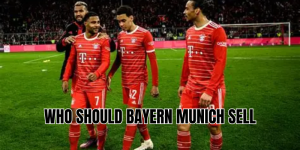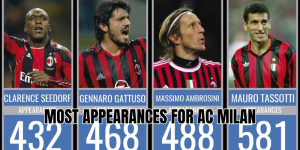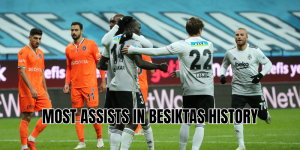You’re not just witnessing colors—you’re entering a legacy. In the world of football, a club’s nickname often captures its identity, soul, and heritage. One such moniker that resonates deeply is why is Barcelona nicknamed Blaugrana. In this article, EquaGoal will accompany you in peeling back the history, meaning, and cultural significance behind that powerful nickname, revealing why “Blaugrana” is much more than a label—it’s the heart of Barça.
What Does “Blaugrana” Mean?
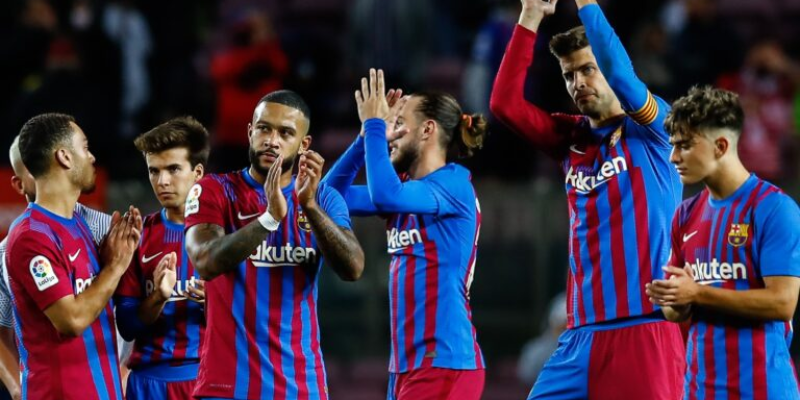
To understand why is Barcelona nicknamed Blaugrana, we first break down the word itself. In Catalan:
- Blau means blue
- Grana means garnet (a deep red)
So “Blaugrana” literally translates to blue and garnet, the two iconic colors of FC Barcelona. The nickname is a direct homage to those stripes that have graced the club’s jersey—and by extension, its identity—for well over a century.
Barcelona’s own club sources state that for more than 100 years, the colors blue and garnet have been central to the team shirt—and this tradition is precisely why the club is also called the equip blaugrana (the “blue-and-garnet team”).
Thus, whenever fans, commentators, or history books refer to “the Blaugrana,” they’re not speaking metaphorically—they’re speaking of the team in blue and garnet, the club’s essence in color.
The Early Days: When Did Blaugrana First Arise
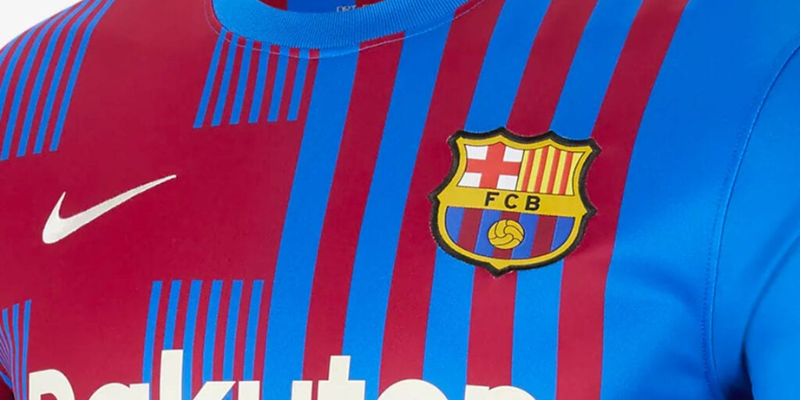
The story behind why is Barcelona nicknamed Blaugrana is deeply rooted in the club’s early years. Here’s how that nickname evolved:
The founding years and first kits
FC Barcelona was founded in 1899, and shortly thereafter, during a meeting on December 13 of that year, the club’s founders decided on the colors blue and garnet for the team shirt. In the earliest days, the design was fairly simple and modest: for example, the first shirt was cut in halves—one half blue, the other garnet. ndo Deportivo])
In those early years, the shorts were not yet blue or garnet. For the first decade or so, FC Barcelona wore white shorts. Later, black shorts were adopted, and only.
By the 1910–11 season, the club had also shifted from halves to vertical stripes of blue and garnet—a design that would become iconic and enduring.
When the nickname emerged
The term “La Blaugrana” or simply “Blaugrana” came into common usage not long after those colors became established. It serves not only as a descriptor of the jersey but as a proud label for the team and its supporters.
Over time, it grew, ranking alongside “Barça” or “Culers.” But unlike those, “Blaugrana” speaks specifically to the visual and symbolic identity—the colors that unite generations of fans.
Theories Behind the Color Choice
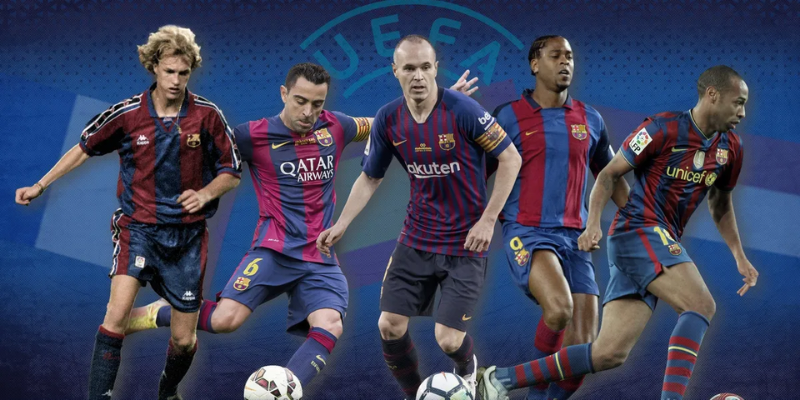
Knowing why is Barcelona nicknamed Blaugrana naturally leads to the question: why blue and garnet in the first place? The truth is, there is no definitive historical record—just intriguing theories and some documented speculation.
1. The Gamper / FC Basel connection
One of the most enduring theories is that Joan Gamper (the Swiss pioneer behind FC Barcelona) borrowed the colors from a Swiss club—commonly cited as FC Basel, which also wears red and blue.
Yet the club’s internal historical research suggests that Gamper’s links with Basel were not as strong as legends claim. In fact, family sources indicate a closer relationship to Excelsior or FC Zürich. C Barcelona]) Still, the visual similarity with Basel kits has fueled the narrative and contributed to the mythos.
2. Merchant Taylors’ School / British rugby influence
Another theory posits that the colors came from a British influence—specifically the Merchant Taylors’ School in Crosby, near Liverpool. Some argue that the Witty brothers (early Barcelona figures) studied there, and that their school’s colors might have inspired the choice.
This connection became more publicly accepted around 2016 when Barcelona began referencing a possible link to that British school in their own club publications.
3. Practical or aesthetic explanations
A less romantic but plausible explanation is that the founders chose blue and garnet simply because those fabrics or dyes were available and distinctive at the time—making them practical and visually striking choices.
Some historians even propose a colorful myth: accountants of the era used dual-point pens—one tip blue, one tip red—and those pens may have inspired the pairing.
Interestingly, some older accounts claim that red could relate to royal purple / Tyrian purple (a deep purplish-red dye from ancient times), while blue evokes the Mediterranean or even maritime tradition.
In truth, none of these theories has ironclad proof. The club historian Daniel Carbó noted that by 1924, early records only confirm that “it was agreed that the club’s colours would be blue and red”—without naming a reason.
Blaugrana Throughout Barcelona’s Identity
Once the colors were fixed and “Blaugrana” entered the lexicon, they became far more than just visual flair—they became woven into the very ethos of the club.
Symbolism and cultural resonance
- Catalan pride: In a region where culture, language, and identity are deeply intertwined with politics, the nickname Blaugrana underscores Catalonia’s distinction. The colors become a banner of Catalan expression.
- Branding & merchandising:, the blue-garnet combination saturates Barça’s image.
- Emotional identity: For supporters worldwide, identifying as “Blaugrana” evokes belonging, loyalty, and generational continuity.
Barca’s nicknames in comparison
To see how Blaugrana stands among Barcelona’s other nicknames:
| Nickname | Meaning / Origin | Usage context |
| Blaugrana | Blue + Garnet, referring to club colors | Often used to refer to the team, brand, identity |
| Barça | Short form of Barcelona | Casual, popular shorthand |
| Culers / Culers | From “culs” (backsides), referencing fans at old stadium | Refers to the supporters |
Blaugrana is unique among these because it speaks directly to what Barça looks like, not just what it’s called or who supports it.
Why Blaugrana Matters Today
When fans chant, commentators reference, and media write “the Blaugrana,” they are invoking a living tradition that spans more than a century. Here’s why the nickname still matters deeply:
- Visual identity clarity: In sports branding, colors are among the strongest identity markers. Blaugrana is instantly recognizable.
- Historical continuity: Despite changes in players, coaches, or management, the blue and garnet have remained almost sacred.
- Cultural pride: For many fans, especially in Catalonia, the nickname is tied to local identity, language, and memory.
- Narrative power: In news, journalism, official communications, and fan culture, “Blaugrana” gives weight and poetic resonance.
Even when the club experiments—white shorts, alternate kits, or marketing tweaks—the core Blaugrana stays at the center of what makes Barça Barça.
Common Misconceptions & FAQs
To round out our understanding of why Barcelona is nicknamed Blaugrana, here are clarifications on common confusions:
Misconception: It’s just red and blue
- Not quite. “Grana” specifically means garnet—a deeper, richer red. The tint matters.
- Misconception: Blaugrana is modern / marketing slang
- Actually, the nickname dates back nearly to the club’s infancy.
- Misconception: It comes from one definitive source
- No—its roots are speculative. Club historians themselves acknowledge there is no documented reason.
- Misconception: It refers only to players
- In reality, it applies to the club as a whole—the team, the brand, the fans.
Conclusion
Why is Barcelona nicknamed Blaugrana? Because Blaugrana literally captures the club’s visual soul: blau (blue) and grana (garnet), the two colors that have wrapped Barça in identity for well over a century. That name isn’t just a nickname—it’s a constant, resonating emblem of heritage, pride, and belonging.
Through the years, Blaugrana has transcended kit design and entered the emotional vocabulary of supporters. It’s how we write about Barça, chant about Barça, and feel about Barça. If you want to dive deeper into Barcelona’s legends, records, or match history, EquaGoal is your portal to every stripe, result, and roar of the Blaugrana legacy.


